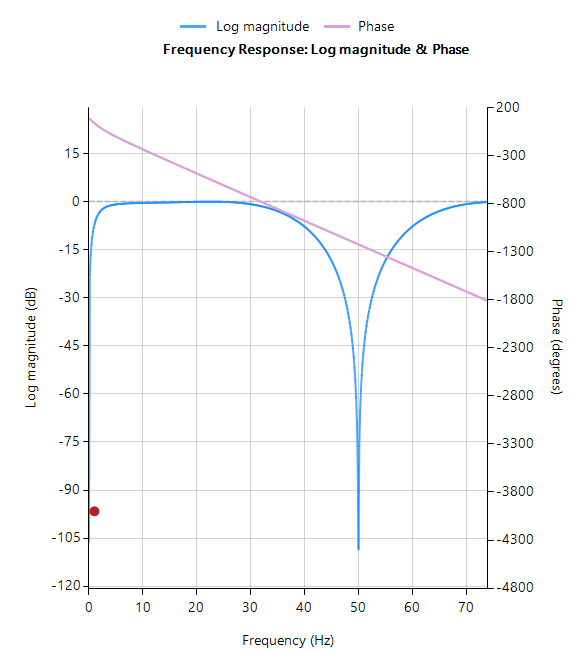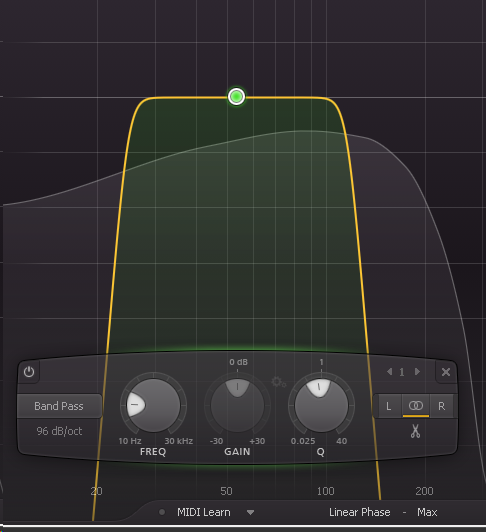Hello, I'd like to ask what's theoretically doing the LPN-Filter switch on this power amplifier? Here's the description in the manual:
As far as I understand that's how it looks like:

So let's imagine we're filtering out this exact frequency at 50Hz with the given Q-factor. But why? The amplifier doesn't "know" or cannot detect the resonant frequency of the passive loudspeaker, nor it can change the frequency dynamically, since it's a physical switch on the amplifier itself. Which frequency range are we exactly notching and how is this correlated to phase in the context of power amplifiers and loudspeakers? Is it that for instance we have a low-pass filer at 20kHz with let's say 96dB/octave cutoff slope and then the notch itself is upwards so that it can compensate for the loss of highs at the cutoff frequency?
The patented LPN (Low-pass notch) filter corrects the frequency and phase response of the connected loudspeakers. This effect can not be reached using equalizers or „Bass-Boosters”, because the LPN filter mainly optimizes the rise time of the audio signal. Switch the filter ON or OFF for evaluation of the actual effect that the filter has on the sound. The sound is getting more powerful, especially when using full-range speakers (e.g. 12/2, 15/2) or subwoofers. For large systems (e.g. controlled via DC‘s DSP 260) using theLPN filter is not recommended.
As far as I understand that's how it looks like:

So let's imagine we're filtering out this exact frequency at 50Hz with the given Q-factor. But why? The amplifier doesn't "know" or cannot detect the resonant frequency of the passive loudspeaker, nor it can change the frequency dynamically, since it's a physical switch on the amplifier itself. Which frequency range are we exactly notching and how is this correlated to phase in the context of power amplifiers and loudspeakers? Is it that for instance we have a low-pass filer at 20kHz with let's say 96dB/octave cutoff slope and then the notch itself is upwards so that it can compensate for the loss of highs at the cutoff frequency?
Last edited:


